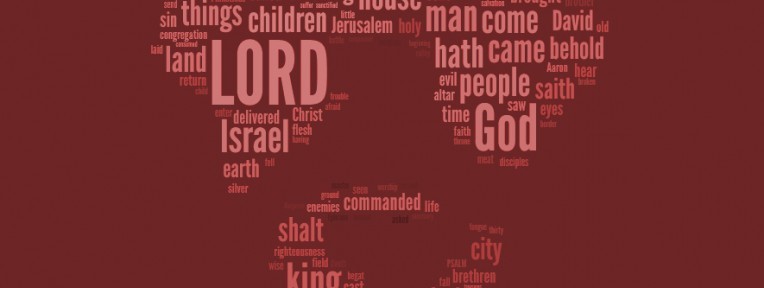Most Christians have heard of the Dead Sea Scrolls and their importance to biblical scholarship, but few have ever actually seen them. Now, that no longer has to be the case. The Israel Museum has teamed up with Google to not only make the images of the scrolls available digitally, but to make them searchable with interactive English translation. Not only can you search the text on the Museum’s website, but now it will show up in Google search results (including in custom search results on soulliberty.com) as well. They have even put a little bit of “flare” to it by animating the paper appear to be unrolling as you scroll through it. Check it out here: http://dss.collections.imj.org.il/
Month: September 2011
Evangelist Ray Comfort takes people from being “pro-choice” to “pro-life” in a matter of seconds by drawing parallels between the Nazi Holocaust and the American abortion industry. This 33-minute film will truly open your eyes to this horror and what we can do to end it.
What happens when we medicate a “chemical imbalance” instead of asking Jesus to heal our sinful hearts? The Citizens Commission on Human Rights documents the mad, mad world of psychotropic drugs.

When I first began exploring word clouds as a means of visualizing biblical data, the result using Wordle was little better than a jumble of words sized according to frequency, with random colors and angular variations to add interest. It’s a decent proof of concept, but as I said earlier, it fails as a design concept unless it’s intelligently combined with other elements. Since then, I have discovered more well-developed technology that can “auto-magically” create word clouds which are good enough to stand alone as an artistic element.
At least one tool, Tagxedo, bridges the gap between Wordle’s overly simplistic automation and the manual processes required for intricate typographic designs such as maps made from words placed by hand, one by one. Its strength is in its ability to layout and color the words based on an uploaded image. I have re-created my original word cloud using words in the KJV (with some highly common words intentionally removed), laid out using an image of Jesus wearing a crown of thorns.
This tool allows you to save images in a range of useful formats as well as create your own products using that design. Interestingly, when I shared the above image with the Tagxedo creator, he pointed out the fact that the Tagxedo store features a few products already designed with Bible words, albeit from a different image of Jesus.
What I particularly like about this concept is that the usual images of Jesus are merely artistic imaginations which may not have anything at all to do with how he really looked. Instead, we get a truer, clearer picture of the Savior from the words he spoke though the writers of scripture. How much more appropriate is it to paint his image with those words?
Then said I, Lo, I come: in the volume of the book it is written of me.
-Psalm 40:7

As if charges of infanticide were not enough to convict them, abortionists are now increasingly facing allegations of racism. A recent report by Life Dynamics, Inc. carries on this trend by seeking to bolster their claims in a 2009 film, Maafa 21, that Planned Parenthood and others are targeting minority neighborhoods. Once this news broke nationally, the Guttmacher Institute (a research spin-off of Planned Parenthood, still funded by them despite the “divorce” attempt) predictably tried to spin the data by pointing out it bolsters their claims made in January of this year. Finding myself initially skeptical that both of these advocacy groups were engaged in the kind of data distortion we find too frequently in the political arena, I set out to conduct my own analysis. In the interest of full transparency, readers can explore the data themselves using the interactive tool below.
The basic claim made in the Life Dynamics report is that abortion providers and advocates choose to locate their facilities in minority areas to limit their population growth. They highlight clinics located in areas with black or Hispanic populations at least 125% of the state’s overall demographics. Guttmacher takes exception to this definition and instead chooses to point out that fewer than 1 in 10 clinics are in “predominately” minority ZIP codes, or those with greater than 50% black or other minority demographic. Also at issue is what should constitute an “abortion clinic”: is it just those that perform more than 400 abortions annually, all abortion-providing clinics, or abortion providers plus any other clinic operated by Planned Parenthood? As this analysis will show, virtually any methodology one accepts will still result in the same conclusion: the demographics of neighborhoods blighted by abortion advocates are overwhelmingly “blacker” than the nation as a whole or the particular state in question. In all candor, however, I must point out that this correlation does not prove causation when studied alone. Other factors must be taken into account which I will address in a moment.
My initial skepticism of both reports comes from each group’s tendency to only present data which supports their claims and omit that which does not. Life Dynamics only lists variances significantly higher than the State’s percentage and leaves blank any which are lower. The Guttmacher Institute only tells us the percentage of abortion clinics in majority black areas but chooses not to compare it to national statistics. Both of them also highlight extreme outliers to dress things up with hype. I propose something in the middle – more precisely, the exact middle, or “median.” Compare the median percentage of blacks in ZIP codes with clinics versus all ZIP codes in the nation or a particular state (using filters provided on the interactive chart above). As of the 2000 census, exactly half of all ZIP codes had black populations of more than 0.9% (the median value). Compare that to the median percent black among clinic locations of 4.4%. This type of comparison also shows that 83% of clinics are in places with more blacks than the national median. Had they been totally unbiased in their location choices, one would find little difference in the two medians. These facts alone show that the abortion industry predominantly picks areas with abnormally high black populations.
What if we “move the goalposts,” as Guttmacher’s Joerg Dreweke says, back from “disproportionately black” to “majority black?” They point out that roughly 9% of clinics are in predominately black neighborhoods. But, how does that compare to other ZIP codes? Of the 26,481 ZIP codes in the census data, 1,067 of them were more than half black. In other words, an unbiased location choice should have around 4% of their clinics in majority black areas, when in fact there are over twice that many! With pro-abort statistics again being overwhelmingly higher than what is normal elsewhere, I can guess why Guttmacher’s representative chose to overlook it.
Now, I have so far not defined what sort of clinic should be included. Guttmacher limits their list to those which perform over 400 abortions per year. Life Dynamics extends this to any clinic listed with the National Abortion Federation of the National Council of Abortion Providers. They additionally include all Planed Parenthood facilities, regardless of whether abortions are provided on-site. Their rationale is that “every Planned Parenthood facility in America either does abortions or refers for them.” If we are to trust the Planned Parenthood website listing clinics and services, there are in fact some clinics that advertise neither abortions on-site nor official referrals. I contend that in the final analysis, it makes little difference which clinics one includes in their data. I compared the above data for multiple types of services offered (and by whom) and found the same conclusions hold true in all cases. I would encourage readers not to simply take my word for it, but examine the differences on your own using the “Abortion Services” filter options above.
As stated before, this correlation (no matter how strong) cannot conclusively demonstrate Planned Parenthood’s motives. One could reasonably argue that the abnormal percentages of minorities are an unintentional byproduct of other choices. Perhaps they target urban areas, or want to provide free services to low-income women – both of which tend to be dominated by minorities. Maybe they’re simply responding to demand (which is far higher among minorities) and are color blind as to where the demand originates. All of these may deserve further analysis, but I prefer to judge motives by the history of actions and statements made. Those points have been made and argued elsewhere and it goes far beyond the limited scope of this article. Instead I suggest watching the excellent film Maafa 21 by Life Dynamics mentioned at the beginning. It extensively documents the eugenicist history of the entire abortion movement, carrying through from its very origins to our modern day.
What are we to do about all this? If it has not been enough to illustrate the millions of unborn children being picked apart limb-from-limb, can we expect charges of racism to work in favor of the pro-life cause? As a Christian, I suggest that our political efforts, though noble, may not be the most effective approach. Instead, I share the advice given in Psalm 19:7: “The law of the LORD is perfect, converting the soul: the testimony of the LORD is sure, making wise the simple.” It is the law of the Lord which will convert the souls of the evildoers.
The giver of life is also the giver of justice and of mercy. If we are to see justice done and mercy shown on these unnamed victims, we must seek the Lord to do so. As you ponder and pray about this, let me point you to an upcoming film which is sure to aid us in learning how we may someday end the atrocity. It is called 180, featuring well-known evangelist Ray Comfort. One trailer for the film shows him doing his signature “man on the street” interviews. He gets several people to not only change their mind about being “pro-choice” but manages to do it in a matter of minutes or even seconds. Surely God is with this man. To reiterate: if we are to end the genocide, we must seek the kind of wisdom Jesus has given to Ray Comfort and others like him. Instead of relying only on our own ability to persuade through the lens of pop-culture definitions of morality, we must pray that God will change hearts and minds through us and through his words.
